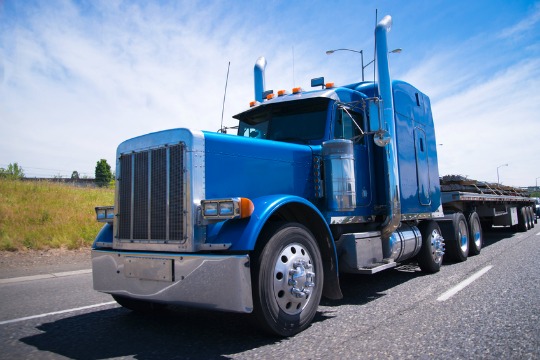3 flatbed hauling tips.
November 7, 2018

The list of products hauled by flatbed is long and diverse, everything from construction material to airplane wings can make it from point A to point B. When you consider the trailer variations needed to move this assorted freight, finding the right truck may seem like a challenge. After all, flatbed shipments do require special attention to detail. There is no need to worry, though - here at Freightquote by C.H. Robinson, we know a thing or two about helping you figure out what you need to consider. After you read through these three flatbed hauling tips, you'll have that flatbed load on the road in no time.
1. Knowing what you'll be hauling.
Understanding the particulars of your shipment is the most important step in hauling flatbed freight. Let's walk through the questions you'll need to answer each time you have a flatbed shipment. This will inform the rest of the shipping process and refine your equipment choices.
What commodities are you hauling?
Flatbed freight needs to be secured. Your carrier will need to know what you're shipping to ensure they have the right accessories for your product. Some shipments may require chains while others require ratchet straps. By ensuring the carrier knows what type of freight you are hauling, you can help them prepare.
Is the product new or used? What is the cargo's value?
This information will be used to determine if the carrier has the appropriate cargo insurance to haul your freight. Double check ahead of time so you're not held up later down the line.
What are the dimensions and weight of my freight?
There are many types of trailers in the flatbed industry. Knowing the freight dimensions and weight will ensure the proper trailer is selected for your shipment. Additionally, having the correct dimensions and knowing the weight is critical to understanding whether your shipment is legal or whether it requires permits in transit.
Are tarps required for your flatbed shipment?
Not every load requires tarps, so not every truck will have them available. And tarps come in all different sizes. Just like it's important for security reasons, knowing the type of freight being hauled will also ensure you get a truck that has the correct tarps to cover the load.
Are there any other accessories required to safely transport the product?
Hauling flatbed freight requires additional equipment and accessories. Drivers are equipped with chains, corner protectors, dunnage, pipe stakes and coil racks to ensure that your load is properly secured and is shipped safely to its destination. Understanding what you are shipping and knowing the dimensions/weight allows us to be more prepared when providing the right equipment for your load.
How will the product be loaded and unloaded?
Understanding how your freight will be loaded and unloaded will help with determining what type of trailer can be used to transport your goods. For instance, if you plan to load your freight from a loading dock, they won't send in a step deck since it isn't dock height.
Where are the pickup and delivery locations? If they are job sites, will there be crews waiting?
Riggers and crews are expensive. A freight service provider that understands the importance of deadlines will consider timing when they assign a carrier.
Hauling flatbed freight is no easy feat and while we know that's a lot of information to pull together, you'll be thankful you did your homework. It puts you a step closer to choosing the right equipment for your freight.
2. Know the trailers hauling your freight.
Take the time to familiarize yourself with equipment availability to make the best financial decision for your company and to move your freight safely. Remember, a quality freight service provider can assist you with this.
Some trailer types, like standard flatbeds and step decks, have decent capacity while the more specialized, like extendable trailers and Removable Goose Necks (RGN's), take more time to secure.
If your shipment requires accessories, remember to communicate that to your provider to ensure the trailer you get can handle the requirements of your shipment.
3. Freight technology can help.
Finding equipment for a standard flatbed shipment can be time consuming, and finding a specialized trailer can be frustrating. If you've ever found yourself searching for a truck on short notice, unprepared for the cost or facing unique requirements, it might be in your best interest to work with an online freight service that will have your back.
An online freight service will connect you to an expansive carrier network that will help you secure capacity and locate equipment. Plus, you can find a standard flatbed, step deck, drop deck, removable gooseneck, flatbed LTL or over dimensional and overweight equipment that's right for your shipment. An online freight service provider will also tender the load to a qualified contract carrier and arrange permits or recommend escorts when needed.
Final thoughts on flatbed freight shipping.
Hauling flatbed freight can be a big endeavor but by keeping these three steps in mind, you'll put yourself in a much better position to take on that flatbed shipment. Ready to ship? Get free and instant quotes 24/7, learn more about our flatbed services or feel free to contact us today for more information.
Have a shipment to book?
Image Credit: IStock
Topics:
Get Your Shipping Quote


